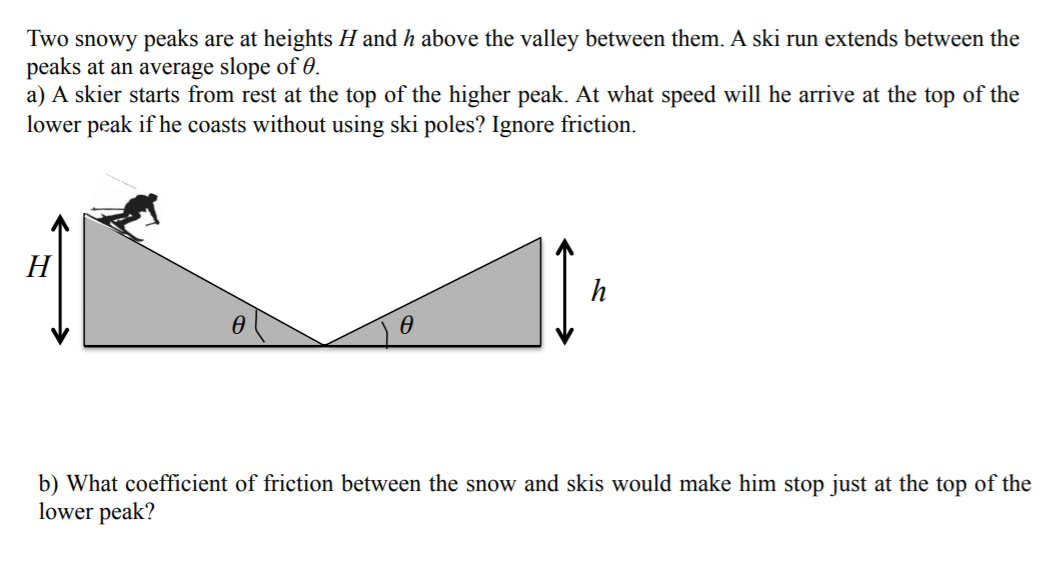Two snowy peaks are at heights H and h above the valley between them. A ski run extends between the peaks at an average slope of 0. a) A skier starts from rest at the top of the higher peak. At what speed will he arrive at the top of the lower peak if he coasts without using ski poles? Ignore friction. Н ө ө b) What coefficient of friction between the snow and skis would make him stop just at the top of the lower peak?
Two snowy peaks are at heights H and h above the valley between them. A ski run extends between the peaks at an average slope of 0. a) A skier starts from rest at the top of the higher peak. At what speed will he arrive at the top of the lower peak if he coasts without using ski poles? Ignore friction. Н ө ө b) What coefficient of friction between the snow and skis would make him stop just at the top of the lower peak?
Related questions
Question
need assistance on the problem. photo attatched

Transcribed Image Text:Two snowy peaks are at heights H and h above the valley between them. A ski run extends between the
peaks at an average slope of 0.
a) A skier starts from rest at the top of the higher peak. At what speed will he arrive at the top of the
lower peak if he coasts without using ski poles? Ignore friction.
Н
ө
ө
b) What coefficient of friction between the snow and skis would make him stop just at the top of the
lower peak?
Expert Solution
This question has been solved!
Explore an expertly crafted, step-by-step solution for a thorough understanding of key concepts.
This is a popular solution!
Trending now
This is a popular solution!
Step by step
Solved in 4 steps with 4 images
